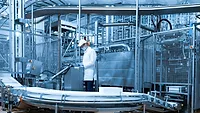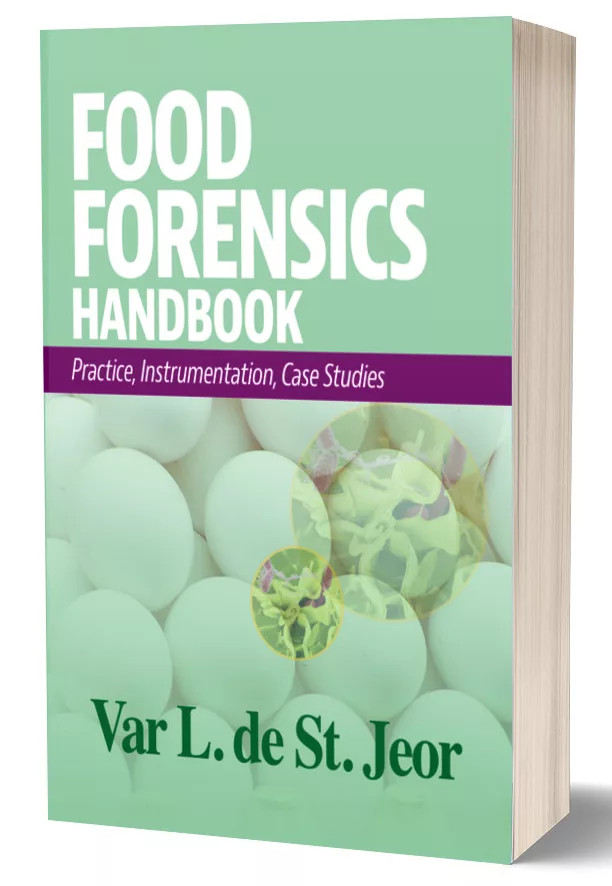A Simple Introduction to Thermometry and Basic Calibration

If I were to ask you to name the two most important tools used in quality control (QC) to monitor the safety of prepared foods, I am certain that a wristwatch (or some other type horological device) and the pocket thermometer would be the odds-on favorites. We all realize that time and temperature are the two variables easiest to control.
By the time we make it into grade school, we usually have the telling time thing down fairly pat, but taking temperatures is entirely another matter. About 20 years ago, I was hired by a state department of corrections to help them avoid a "conditions" case brought by several inmates. It was my job to observe the plaintiff's expert--in this case, a well-known sanitarian--while making his rounds through the cell blocks, support services and food preparation areas. As I followed him through the kitchen and subsequently into the mess hall, I noted that there was something wrong with either his or my technique. Indeed, we differed considerably in our thermometer readings and interpretation. Both of us had calibrated our instruments according to the book, but our readings were disparate by several degrees. His temperature readings were conveniently in the danger zone, while mine conveniently showed that the food was in the safe temperature range. Additionally, our techniques were not synchronous, and upon reflection, there were several instances in which we actually biased our readings.
At the end of the expert's inspections, I began to prepare for the legal defense by examining what we do with thermometers, why we do it and how we do it. Somewhere along the line, I realized that thermometry is not an innate skill endowed by our Creator to all sanitarians, but rather, it is an exacting science and an art form. Much to my own embarrassment, I learned that my techniques were slightly less than "merely adequate." With this as a preface, I would like to introduce the basics of thermometry, and over the next several issues, comment on the good, the bad and the ugly as it relates to portable thermometers and what we do with them.
How We Measure Temperature
Each temperature measuring device that we apply in food safety employs some type of sensor. Each sensor infers temperature by distinguishing some change in a physical characteristic. Each change in a physical characteristic differs, affecting the accuracy and speed of taking temperatures. In today's complex world of retail food, we are confronted with a variety of tastes, different means of transporting, handling and preparing foods, and significant variations in presenting the food to the public. Obviously, we can no longer rely on just one type of temperature measuring device.
In my work as a consulting sanitarian, I routinely use six types of temperature-sensing devices, including thermocouples, resistive temperature devices such as thermistors, infrared, bimetallic, liquid expansion and change-of-state thermometers. Each device has a role in monitoring for food safety, and each has its positive and negative attributes. By understanding the nature of the different temperature measuring devices and their application, we can ensure that our QC efforts are accurate and reflect good science.
Calibration and Validation
Let's start with accuracy. All but the liquid expansion (standard liquid-filled thermometers) and the change-of-state (color-change paper thermometers) require periodic calibration or validation to ensure their accuracy. We use calibration where we can change the settings of the instrument to complement a known standard, whereas in validation, we cannot change the settings, but merely compare the device to a standard. I had my first epiphany while calibrating a standard bimetal dial thermometer. The differences in readings that I had noted back in the corrections case were not because of our techniques or due to manufacturing flaws in our thermometers, but existed because of the variable ways in which the expert and myself approached calibration.
In almost every manual, textbook, pamphlet and article published about food thermometers, including the many videos and PowerPoint presentations we use for training, we are told to calibrate our dial thermometers by immersing the thermometer probe to the appropriate depth, first in a slurry of crushed ice and water, and then in boiling water. The assumption is that water freezes at 32F and boils at 212F. It is further assumed that if the thermometer jibes with this, it is in calibration and therefore accurate. While this is true using distilled or deionized water at sea level, it does not work the same way when the ice cubes and water come from a high total dissolved solids (TDS) source, or when you are high up in the heart of the Rockies or Cascades. The freezing and boiling temperatures can vary as much as ±15F. Everyone who lives in the Rust Belt or who has ever churned home-made ice cream knows that salt lowers the freezing point of water. Everyone also knows that there are different instructions for cooking rice in the Big Easy versus Aspen. It is no small wonder, then, that the standards for temperature in food safety are as elusive as the whims of the enforcers.
To overcome these variables and to obtain accurate readings from your instruments, consider using a "temperature standard" thermometer instead of the freezing/boiling method. A temperature standard thermometer can be any liquid-filled thermometer with the temperature graduations etched on the glass. For our purpose, the temperature standard thermometer does not have to be factory-certified to American Society for Testing and Materials (ASTM) precision thermometer specifications. Any good thermometer from a scientific supply house will meet this need. After all, most liquid-filled thermometers are relatively accurate to less than ±1F, and they are relatively inexpensive, even with an armored sheath to prevent against breakage.
By simply immersing the temperature standard thermometer and the probe of your thermometer in a container of cold tap water, followed by hot water, the temperature comparisons can be easily made. This technique has additional benefits: It is a rapid and easy test to complete and there is no fussing with ice or a tea kettle. With calibration/validation so easy, it can and should be done daily. The quality of the water (TDS) and altitude do not matter since the comparison is being made to a temperature standard thermometer rather than relying on a physical change of the water. Also, the calibration/validation temperature of the cold and hot water more closely approaches the critical temperatures we use for food safety. I have found that most cold water is generally between 40F and 55F, and hot water falls in a temperature range of between 120F and 140F. The two-point calibration ensures instrument accuracy across the entire temperature range in which we are interested as food safety professionals.
Keep Those Temperature Records
Now that you know the right way to calibrate a thermometer, let us borrow a page from the Hazard Analysis & Critical Control Points (HACCP) model. Of specific interest is Principle 7, which directs us to establish record keeping and documentation procedures. It is always a good idea to log the calibration/validation in a hard-bound notebook. (I use the inexpensive school supply composition books). This provides a permanent record for any potential litigation or questions about the safety of the products you are monitoring. Each entry into the notebook should have, at minimum, the name and serial number of the thermometer being tested, the date, time and deviation to the temperature standard, and of course, your initials.
An accurate thermometer in the hands of a trained food safety professional can mean the difference between health and illness for your customers. But merely possessing an accurate thermometer does not ensure that the temperature was taken correctly. We will discuss this in the next article.
Forensic sanitarian Robert W. Powitz, Ph.D., MPH, RS, CFSP, is principal consultant and technical director of Old Saybrook, CT-based R.W. Powitz & Associates, a professional corporation of forensic sanitarians who specialize in environmental and public health litigation support services to law firms, insurance companies, governmental agencies and industry. For more than 12 years, he was the Director of Environmental Health and Safety for Wayne State University in Detroit, MI, where he continues to hold the academic rank of adjunct professor in the College of Engineering. Powitz is the first in his field to hold the title of Diplomate Laureate in the American Academy of Sanitarians.
Powitz welcomes reader questions and queries for discussion in upcoming columns. Feedback or suggestions for topics you'd like to see covered in future editions of Food Safety Magazine can be sent to him directly at sanitarian@juno.com or through his website at www.sanitarian.com.
Looking for quick answers on food safety topics?
Try Ask FSM, our new smart AI search tool.
Ask FSM →







